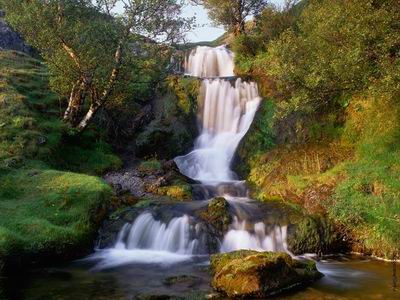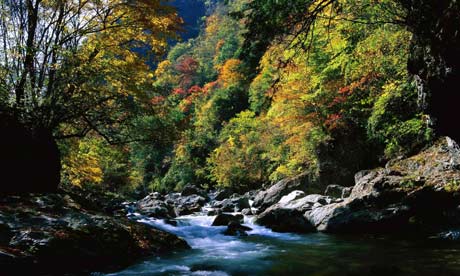Shennongjia
Shennongjia is situated in western Hubei Province, covering an area of over 3,000 square kilometers. The special terrain here creates a warm and humid climate, making it a paradise for plants and animals at the meeting point of North and South China.
Known as "The Oriental Botanic Garden" and the natural gene bank of biological species, it shelters some of the world’s rare or endangered plants and animals, such as Chinese dove trees, South China tigers, white bears and white snakes.
Shennongjia is the "Sacred Green Land" in people's minds, where a primitive natural ecology is well preserved. In 1986 with the approval of the State Council, Shennongjia became “The National Nature Reserve of Forests and Wild Animal Species”.
In 1990, UNESCO accepted it into the protection network of "Man and Biosphere". In 1992, it was selected as the "Demonstration of Natural Reserve of Bio-diversity" by the United Nations Development Program.

The tourist resources provide an array of attractions: the primitive forests, mountains and valleys, brooks and waterfalls, rare animals and plants, as well as the mysterious “wild men”. A trip to Shennongjia can be done with various focuses: scientific research and study, adventures, sightseeing and holidays, as well as skiing and snow fun.
There are over twenty major scenic spots in
Shennongjia, including
Fengjingya,
Hongping Valley,
Shennong Top,
Source of Fragrant Brook and Dajiu Lake.
Shennong Top, known as the first peak in central China, is 3105.4 meters above sea level, where traces of ancient floods can still be seen through the mountain top, the slope, the uneven surface, the exposed huge rocks, and many pebbles.
Fengjingya is a dream-like place with many spectacular views: changing clouds and mist, exotic stone poles and stone peaks, and magnificent mountains reflected in the lucid water.
http://www.cnhubei.com/200502/ca677332.htm http://static.guim.co.uk/sys-images/Environment/Pix/columnists/2010/5/25/1274793936901/Shennongjia-Nature-Reserv-006.jpg
http://static.guim.co.uk/sys-images/Environment/Pix/columnists/2010/5/25/1274793936901/Shennongjia-Nature-Reserv-006.jpg